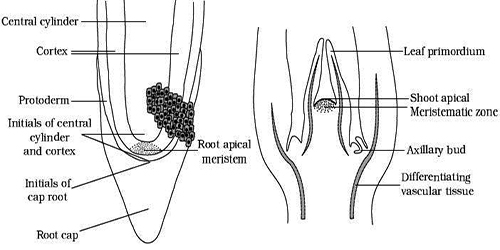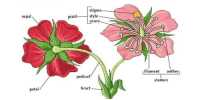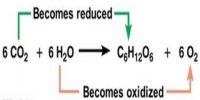Growth in plants is largely restricted to specialized regions of active cell division called Meristematic Tissues. Plants have different kinds of meristems. The meristems which occur at the tips of roots and shoots and produce primary tissues are called apical meristems (Figure).

Figure: Apical meristem: (a) Root (b) Shoot
Root apical meristem occupies the tip of a root while the shoot apical meristem occupies the distant most region of the stem axis. During the formation of leaves and elongation of the stem, some cells ‘left behind’ from shoot apical meristem, constitute the urinary bud. Such buds are present in the axils. Cleaves and are capable of Conning a branch or a flower. The meristem which occurs between mature tissues is known as intercalary meristem. They occur in grasses and regenerate parts removed by the grazing herbivores. Both apical meristems and intercalary meristems are primary meristems because they appear early in the life of a plant and contribute to the formation of the primary plant body.
The meristem that occurs in the mature regions of roots and shoots of many plants, particularly those that produce woody axis and appear later than primary meristem is called the secondary or lateral meristem. They are cylindrical meristems. Fascicular vascular cambium, interfascicular cambium and cork cambium are examples of lateral meristems. These are responsible for producing the secondary tissues.
Following divisions of cells in both primary and as well as secondary meristems, the newly formed cells become structurally and functionally specialized and lose the ability to divide. Such cells are termed permanent or mature cells and constitute the permanent tissues. During the formation of the primary plant body, specific regions of the apical meristem produce dermal tissues, ground tissues and vascular tissues.














